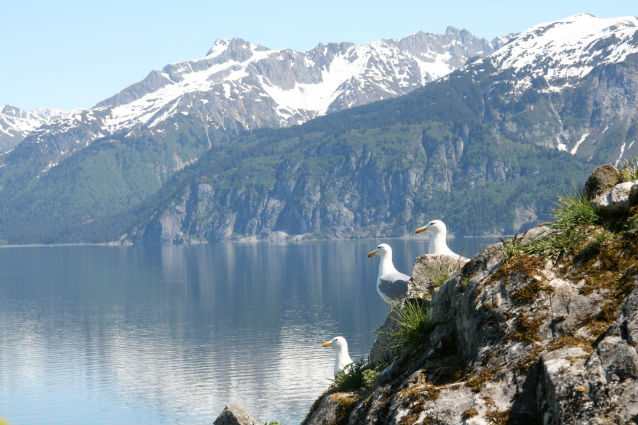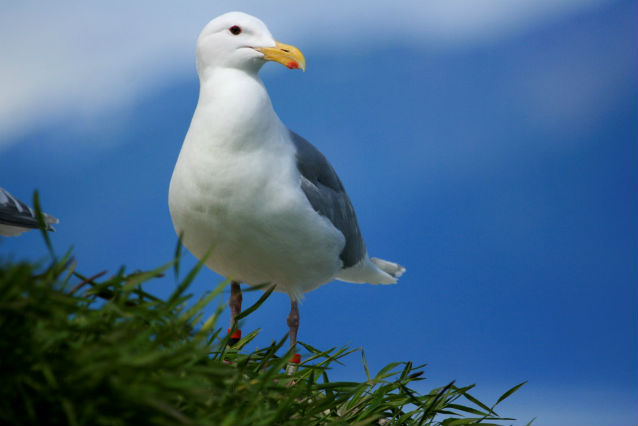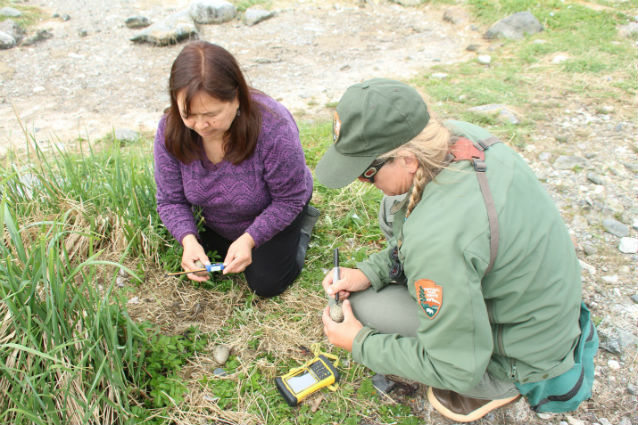Did you know? The Huna Tlingit's ancestral homeland includes Glacier Bay National Park and Preserve. Gull eggs are an important traditional food source for the Huna Tlingit.
Gathering eggs in Glacier Bay was something especially the family looked forward to. It was like Easter. Family and cousins gathered up there and we collected eggs, and it was a joyous occasion. Huna Tlingit elder
Introduction

NPS
For centuries, the Huna Tlingit harvested gull eggs at rookeries scattered throughout the recently degalciated islands of lower Glacier Bay. Egg harvests not only provided a healthy spring food source, but also served as a mechanism for families to bond through intergenerational food harvests. These traditional harvests were curtailed in the 1960’s when the National Park Service (NPS) began enforcing the Migratory Bird Treaty Act and related NPS policies that prohibited egg harvest.
In recent years, NPS and the Hoonah Indian Association (HIA) have collaborated on a range of programs designed to encourage and reinvigorate cultural activities within the park, including the harvest of gull eggs. In 2010, NPS prepared a Legislative Environmental Impact Statement (LEIS) that determined that egg harvest could occur within the park without impacting gull populations or other park resources. Based on these findings, Congress passed legislation in 2014 authorizing harvest of glaucous-winged gull eggs in Glacier Bay National Park. With the long awaited passage of this legislation, NPS can now promulgate the necessary regulations to implement the law, and a collaborative NPS-HIA working group working group can begin to develop the first gull egg harvest plan.
Methods and Results

NPS
Currently, Glacier Bay National Park managers are collaborating with HIA to collect information on glaucous-winged gulls to inform future egg harvests. Since 2012, park biologists monitored gull populations at six potential harvest sites. From 2012 to 2015, researchers repeatedly surveyed 20 islands and sections of shoreline in Glacier Bay to determine the distribution and abundance of nesting gulls based on historic observations. Gull colonies were considered potential egg harvest sites if they had more than five nests and were accessible to harvesters without requiring specialized climbing equipment or safety ropes.
Of the 15 gull colonies identified in the LEIS, six potential egg harvest locations were confirmed. The number of nests per potential harvest site ranges from 22 to 174 nests, and the total number of nests across all colonies per year ranged from 664 to 673. Although the total number of nests remained relatively stable across years, there were substantial differences in productivity as evidenced by the variations in the total number of eggs (170 to 1403) and fledglings (1 to 437) between years. The number of adults at each colony ranged from 46 to 922.
Other species that may be impacted by gull egg harvest included several species of marine mammals that use gull colonies as terrestrial haulouts and many species of seabirds that nest in proximity to gulls. This information will be used as part of an adaptive management strategy to determine upcoming egg harvest locations in the NPS-HIA collaborative harvest plan.

NPS/C. Behnke
Additionally in 2015, biologists collaborated with HIA on an experimental research harvest of eggs to test for any statistical differences between harvested nests and post-harvested nests in egg-laying timing, the number of eggs per nest and per colony, and egg size.
On May 26, 2015, four members of the Hoonah Indian Association joined the park cultural anthropologist, wildlife biologist, and wildlife technician on the park’s research vessel to visit two gull colonies preselected for this experimental harvest. Tribal members collected 100 gull eggs from two colonies and assisted NPS biologists in conducting a full census of nests, nest contents, and measuring harvested eggs. The harvested eggs were distributed among Huna elders and other tribal members and used to bake cupcakes for a school picnic to help reintroduce children to this culturally important food.
For More Information
Contact Tania Lewis, tania_lewis@nps.gov
https://www.nps.gov/glba/learn/historyculture/tlingit-gull-egg-harvest.htm
Web article created by Erin Kunisch
https://www.nps.gov/rlc/oceanalaska/index.htm
Updated January 2016
Click here to print a copy of this article.
Last updated: November 22, 2021
